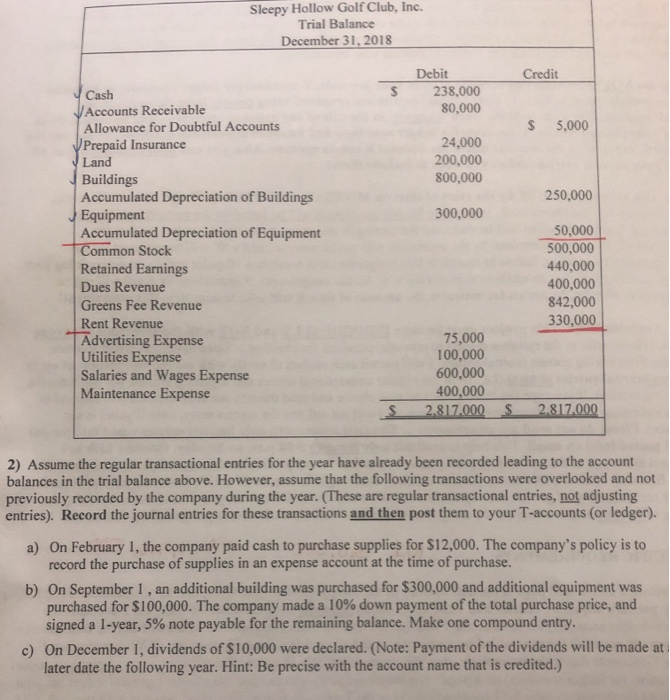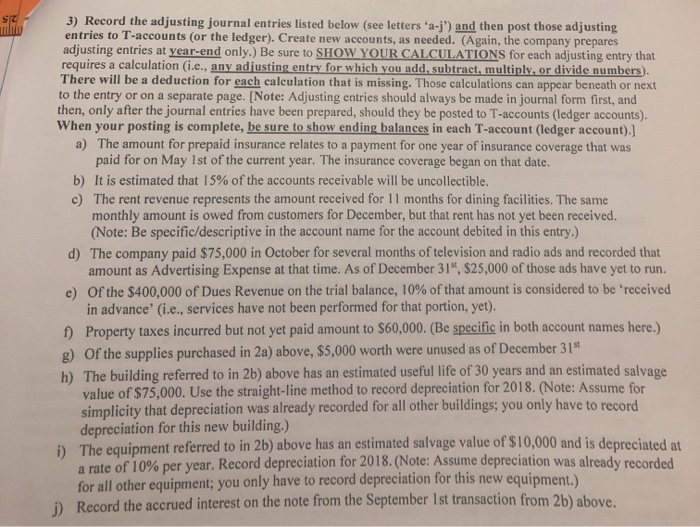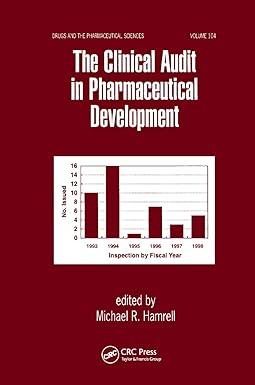Sleepy Hollow Golf Club, Inc. Trial Balance December 31, 2018 Credit Debit 238,000 80,000 $ 5,000 24,000 200,000 800,000 250,000 300,000 Cash VAccounts Receivable Allowance for Doubtful Accounts Prepaid Insurance Land y Buildings Accumulated Depreciation of Buildings Equipment Accumulated Depreciation of Equipment Common Stock Retained Earnings Dues Revenue Greens Fee Revenue Rent Revenue Advertising Expense Utilities Expense Salaries and Wages Expense Maintenance Expense 50,000 500,000 440,000 400,000 842,000 330,000 75,000 100,000 600,000 400,000 2.817,000 S 2.817.000 Sleepy Hollow Golf Club, Inc. Trial Balance December 31, 2018 Credit Debit 238,000 80,000 $ 5,000 24,000 200,000 800,000 250,000 300,000 Cash VAccounts Receivable Allowance for Doubtful Accounts Prepaid Insurance Land Buildings Accumulated Depreciation of Buildings Equipment Accumulated Depreciation of Equipment Common Stock Retained Earnings Dues Revenue Greens Fee Revenue Rent Revenue Advertising Expense Utilities Expense Salaries and Wages Expense Maintenance Expense 50,000 500,000 440,000 400,000 842,000 330,000 75,000 100,000 600,000 400,000 2.817,000 $ $ 2.817.000 2) Assume the regular transactional entries for the year have already been recorded leading to the account balances in the trial balance above. However, assume that the following transactions were overlooked and not previously recorded by the company during the year. (These are regular transactional entries, not adjusting entries). Record the journal entries for these transactions and then post them to your T-accounts (or ledger). a) On February 1, the company paid cash to purchase supplies for $12,000. The company's policy is to record the purchase of supplies in an expense account at the time of purchase. b) On September 1, an additional building was purchased for $300,000 and additional equipment was purchased for $100,000. The company made a 10% down payment of the total purchase price, and signed a 1-year, 5% note payable for the remaining balance. Make one compound entry. c) On December 1, dividends of $10,000 were declared. (Note: Payment of the dividends will be made at later date the following year. Hint: Be precise with the account name that is credited.) SZ 3) Record the adjusting journal entries listed below (see letters 'a-j') and then post those adjusting entries to T-accounts (or the ledger). Create new accounts, as needed. (Again, the company prepares adjusting entries at year-end only.) Be sure to SHOW YOUR CALCULATIONS for each adjusting entry that requires a calculation (i.e., any adjusting entry for which you add, subtract, multiply, or divide numbers). There will be a deduction for each calculation that is missing. Those calculations can appear beneath or next to the entry or on a separate page. (Note: Adjusting entries should always be made in journal form first, and then, only after the journal entries have been prepared, should they be posted to T-accounts (ledger accounts). When your posting is complete, be sure to show ending balances in each T-account (ledger account).] a) The amount for prepaid insurance relates to a payment for one year of insurance coverage that was paid for on May Ist of the current year. The insurance coverage began on that date. b) It is estimated that 15% of the accounts receivable will be uncollectible. c) The rent revenue represents the amount received for 11 months for dining facilities. The same monthly amount is owed from customers for December, but that rent has not yet been received. (Note: Be specific/descriptive in the account name for the account debited in this entry.) d) The company paid $75,000 in October for several months of television and radio ads and recorded that amount as Advertising Expense at that time. As of December 31", $25,000 of those ads have yet to run. e) of the $400,000 of Dues Revenue on the trial balance, 10% of that amount is considered to be received in advance' (i.e., services have not been performed for that portion, yet). f) Property taxes incurred but not yet paid amount to $60,000. (Be specific in both account names here.) g) of the supplies purchased in 2a) above, $5,000 worth were unused as of December 31 h) The building referred to in 2b) above has an estimated useful life of 30 years and an estimated salvage value of $75,000. Use the straight-line method to record depreciation for 2018. (Note: Assume for simplicity that depreciation was already recorded for all other buildings; you only have to record depreciation for this new building.) i) The equipment referred to in 2b) above has an estimated salvage value of $10,000 and is depreciated a rate of 10% per year. Record depreciation for 2018. (Note: Assume depreciation was already recorded for all other equipment; you only have to record depreciation for this new equipment.) ) Record the accrued interest on the note from the September Ist transaction from 2b) above









